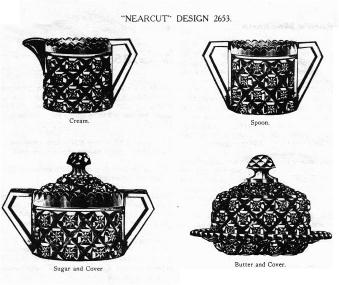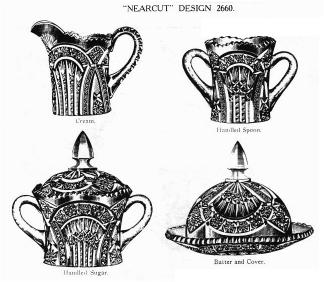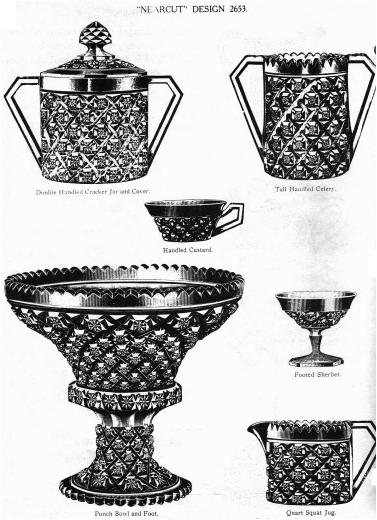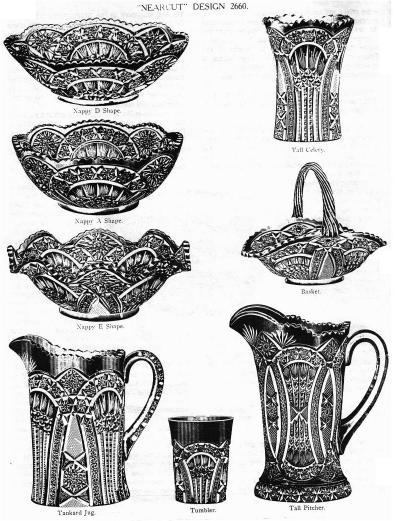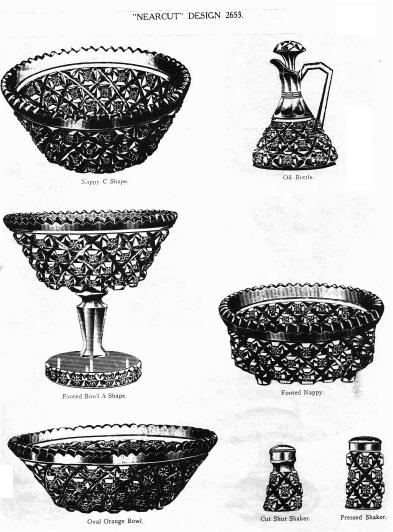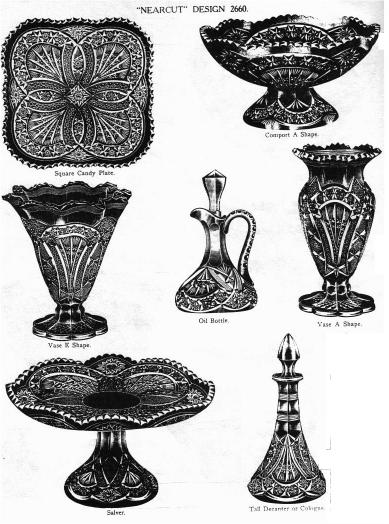How It All Began - Part IV
by Mark Nye
Issue No. 283 - November, 1996
The masthead of China, Glass and Lamps (CGL) from 1907 described the publication as "A WEEKLY JOURNAL FOR THE BUYER." Published in Pittsburg on Saturday, the last issue of 1907, dated December 28, had this to say about the upcoming Pittsburg show.
"GLASS AND POTTERY EXPOSITION OPENS IN PITTSBURG NEXT WEEK."
The coming week marks the opening of Pittsburg's annual glass and pottery exposition. Even less than in former years will the exposition be a concrete affair, as the exhibits, for the most part, will be divided among three of the city's leading hotels, while there also will be some interesting displays at other hostelries."To people interested in glass and pottery trades, there exhibitions always present a two-fold view. There is first the point that local buyers have before them among the best that is to be had in American glass and pottery. There is some very good ware that does not come to Pittsburg for the January show, but the missing element represents a minority that will never cut much figure in electing a president of anything but a rump parliament, as Oliver Cromwell might say. The other big feature of the exposition is the drawing together of the most representative body of traveling salesmen and prominent members of firms taking part, that Pittsburg sees during the year. The fact that this assemblage is taken advantage of for the annual meeting of the Western Glass & Pottery Association is the strongest possible indication of its personal importance."
The Cambridge exhibit was located at the Monongahela House with Mr. Bennett himself in charge. Also located at the same hotel was Fostoria while Duncan & Miller and Heisey were at the Seventh Avenue Hotel.
A month earlier this note appeared in the November 23 issue: "Announcement is made that the Cambridge Glass Co., Cambridge, Ohio, will have some fine new lines of ware on display at the Pittsburg exhibition in January. The factory is operating steadily, with every indication of the continuance of the present volume of business."
A report published in the January 11, 1908 issue of CGL had this to say about the Cambridge exhibit at the 1908 Exhibition.
"If the Cambridge Glass Co.'s exhibit at the Monongahela House does not result in the biggest batch of orders ever received by the firm in the length of time the display continues, it will be because the bottom has fallen out of the glass trade. The first buyer that came along interrupted a good story which Mr. Rockhill was telling the writer, but after a glance over the room he announced that he was not in the market for cut glass and would like to look over the firm's general line. Sounds like a fairy tale, doesn't it. Well, just take a look at the display and then write a criticism. Its publication is guaranteed. Mr. Rockhill calls his ware 'near cut.' It is mighty 'near'. The new ribbon pattern that he has a big display of is so very 'near' some cut glass lines that are right up to date that a close look is necessary to discover the difference. Then, there is a star pattern that is equally deceptive, together with the wheat sheaf and feather cut lines...."
From the January 1908 issue of Glass and Pottery World comes this item regarding the Cambridge Glass Co.:
"The two new table lines of 'Near-Cut' pressed glass are a revelation to all visitors. The 'Star' design has every appearance of light cuttings, and the 'Ribbon' pattern closely approaches in detail rich cut glass. It is surely in a class by itself. 'Trellis' or 'Basket' pattern would better describe its features. Mr. Bennett was born in the Staffordshire district (of England) and has been associated with the china and glass trade all his life. His earlier training in America was with Jones, McDuffee & Stratton, and Jordan-Marsh & Co., Boston..."
A Cambridge advertisement in the January 20, 1908 issue of Glass and Pottery World featured an illustration of a bowl identified as "No. 2653 Design or 'Near Cut Ribbon'." The text of this advertisement read as follows:
"Innovations in Pressed Tableware are to be seen in our two new lines at the Monongahela House, Pittsburg, until February 5, 1908. Near Cut Star Design, Near Cut Ribbon Design. The perfect metal, solid weight and peculiar brilliancy of Near Cut Glass is of course in evidence. In addition the uniqueness of the patterns commend them at sight. They will permit a wide profit on their merits. Buyers say that they are 'The Things' at the Glass Show. The Cambridge Glass Co., Cambridge, Ohio. A. J. Bennett, President, W. C. McCartney, Secretary, George W. Dewey, Treasurer."
Cambridge had a full page advertisement in the 1907 holiday issue of Crockery and Glass Journal captioned "Our New Lines for 1908." Illustrated were the Ribbon handled celery and the Wheat Sheaf tankard.
The "new ribbon pattern" is Nearcut Design 2653, known today as Ribbon, while Wheat Sheaf is Design 2660 and Feather is Design 2651. In all probability the "star pattern" referred to by the unidentified CGL writer is Design 2656 previously mentioned in Part III of this series. Anyone looking at this pattern would certainly refer to it as a star pattern and its line number places it in the same time frame as Ribbon, Wheat Sheaf and Feather. Its identity as the star pattern is confirmed by an illustration that appeared in Glass and Pottery World. It was later described in the 1910 Cambridge catalog as "cut sunburst." If we only had more original Cambridge documents and catalogs maybe some of these big question marks would go away.
